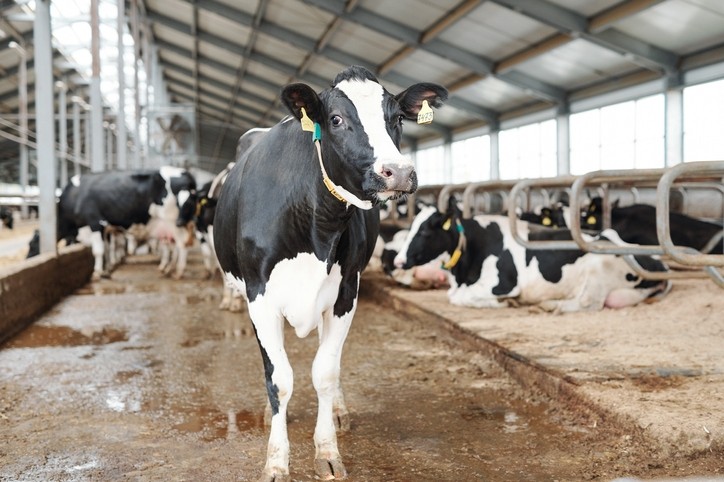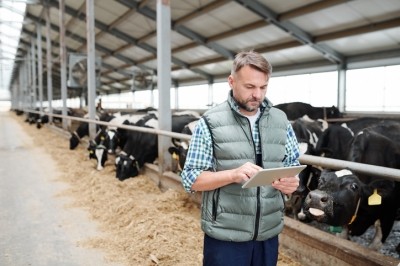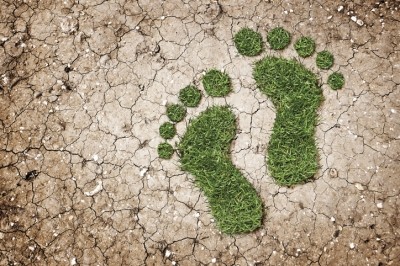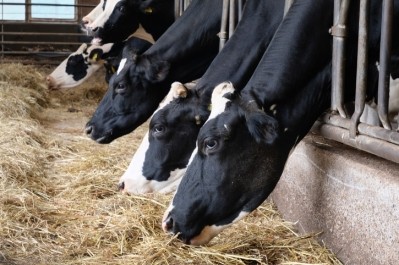Danish team looks to seaweed, probiotics and other strategies to reduce methane output in dairy cows

Methane (CH4) is a natural by-product of gastro-enteric microbial fermentation of feedstuffs in the rumen and is a potent greenhouse gas affecting global climate change.
A dairy cow discharges around 600 liters of methane daily when transforming the feed in the rumen, according to the researchers involved, teams based at Aarhus University and the University of Copenhagen, as well other research institutes and industrial partners.
One of the team leaders, Mette Olaf Nielsen, who was recently appointed professor in production and lactation physiology in ruminants at the Department of Animal Science in Aarhus University, has been actively involved in this field of study for many years.
When based at the University of Copenhagen, she and the other researchers used a laboratory rumen fermentation simulation model to screen different types of compounds/plants for anti-methanogenic properties, with macroalgae proving to be among the most interesting compounds, she said.
“We are now screening a number of macroalgae [using that same simulation model] that can be cultivated in our part of the world. It has been known for quite some time now that there is a specific species of macroalgae from tropical regions - Asparagopsis taxiformis or Asparagopsis armata - that have a huge depressive effect on methane emissions from cattle.
“Unfortunately, the active compounds responsible for this effect are ones we do not want to see in our food supply chain - chloroform and bromoform. Such compounds could be carcinogenic or could degrade the ozone layer. We are not sure whether a feed additive based on such compounds would ever be approved in the EU.”
Mette Olaf Nielsen and her research colleagues want to explore whether Northern Hemisphere grown macroalgae would have developed alternative defense strategies based on safer compounds targeting microorganisms found in the wet environment surrounding them, and where there is also a lack of oxygen.
“We have seen that there are other macroalgae that reduce methane emissions in our in-vitro system. We hope to be able to find safer compounds, produced by such macroalgae, which also target the special methane producing microbes in the rumen of the cow – called Archaea,” she told us.
With new feed additives, it is very important to be able to document that they do not have unwanted effects in the cow’s body and on the animal’s normal physiological functions. It is also important to ensure that unwanted compounds do not accumulate in the cow’s tissue or milk, which is to be used for human consumption, she said.
Seaweed is not the only focus of the program, however.
Spotlight on DSM’s challenger
The researchers are also evaluating a newly developed additive from DSM, branded as Bovaer, in a feeding trial of dairy cattle, where that product is also tested in combination with dietary fat – since fat, in itself, is known to reduce methane emissions, she said.
The DSM feed additive is also being evaluated in combination with nitrate.
“Nitrate, when it gets into the rumen of the cow, is converted to ammonia, which rumen bacteria can use for protein synthesis. This conversion of nitrate into ammonia is associated with consumption of hydrogen, the limiting substrate in the methane production process. If you can get hydrogen channeled into other pathways, then that would be beneficial in terms of methane emission reduction but also for production of microbial biomass that the cows would digest and utilize,” explained the researcher.
DSM expects Bovaer to be on the market in under two years and it has been shown to be effective in methane emission reduction in a lot of different trials to date, said Mette Olaf Nielsen.
Probiotic promise
The project partners are leaving no stone unturned, though, in terms of finding compounds with anti-methanogenic properties, with probiotics also on their radar.
“We are not leaving anything out as we have an industry, dairy production, that is very challenged in our part of the world [and potentially facing further regulatory pressure].
“We have an application sent into the Innovation Foundation here in Denmark. We are waiting for the response. Hopefully, we will get the grant – that project includes a series of probiotic approaches to try to channel hydrogen into other pathways and find microorganisms that could potentially drastically suppress the population of Archaea.
“We need to go fishing and find the right species, and then see to what extent it is possible to cultivate them and feed them to the cows in a way that would enable these microorganisms to work as we want them to in the rumen.”
The team is examining Lactobacillus strains, among others, in this respect, she said.
“I don’t personally believe that we are going to be able to find one particular compound, product or microorganism that can do it all – the trick is to develop a whole palette of different potential instruments and then see if can we get synergistic effects when we combine them, to put as much pressure on these Archaea as possible,” added Mette Olaf Nielsen.








